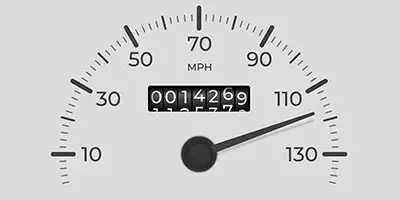The Internal Revenue Service recently announced the inflation adjusted 2025 standard mileage rates used to calculate the deductible costs of operating an automobile for business, charitable, medical, or moving purposes.
Beginning on Jan. 1, 2025, the standard mileage rates for the use of a vehicle are:
- 70 cents per mile for business miles driven (including a 33-cent-per-mile allocation for depreciation). This is up from 67cents per mile in 2024;
- 21 cents per mile driven for medical, down from 22 cents per mile same as 2024; and
- 14 cents per mile driven in service of charitable organizations.
How are 2025 standard mileage rates calculated?
The business standard mileage rate is based on an annual study of the fixed and variable costs of operating an automobile. The rate for medical and moving purposes is based on the variable costs as determined by the same study. The rate for using an automobile while performing services for a charitable organization is statutorily set (it can only be changed by Congressional action) and has been 14 cents per mile for over 25 years.
When using a personal vehicle while performing services for a charitable organization, and instead of using the 14 cents a mile method, a taxpayer who itemizes their deductions can deduct directly-related out-of-pocket expenses, such as the cost of gas and oil. However, the expenses of general repair and maintenance, depreciation, registration fees, or the costs of tires or insurance aren’t deductible.
Important Considerations for Business Use of a Vehicle
The option of calculating the actual costs of using a vehicle for business instead of mileage rates is available. In addition to volatile fuel prices, the bonus depreciation as well as increased depreciation limitations for passenger autos may make using the actual expense method worthwhile. Especially during the first year a vehicle is placed in business service. The bonus depreciation rate had been 100% during 2018-2022. Then it was 80% for 2023, then 60% for 2024. It will be 40% for vehicles put in service in 2025.
However, the standard mileage rates cannot be used if you have used the actual method (using Sec. 179, bonus depreciation and/or MACRS depreciation) in previous years. This rule is applied on a vehicle-by-vehicle basis. In addition, the business standard mileage rate cannot be used for any vehicle used for hire or for more than four vehicles simultaneously.
Extra Deductions in Addition to the 2025 Standard Mileage Rate
Business owners using the standard mileage rate frequently overlook a few key items. For example, parking and tolls, as well as state and local property taxes paid for the vehicle. These items that are also attributable to business use, may be deducted in addition to the standard mileage rate.
Employer Reimbursement
When employers reimburse employees for business-related car expenses using the standard mileage allowance method a few things take place. For each substantiated employment-connected business mile, the reimbursement is tax-free. But only if the employee substantiates to the employer the time, place, mileage and purpose of employment-connected business travel.
The Tax Cuts and Jobs Act eliminated employee business expenses as an itemized deduction, effective for 2018 through 2025. Therefore, during these years employees may not take a deduction on their federal returns for unreimbursed employment-related use of their vehicle.
However, self-employed taxpayers can still deduct the business use of a vehicle. Regardless of whether the standard mileage rate or actual expense method is used, a self-employed taxpayer may also deduct the business use portion of interest paid on an auto loan on their Schedule C.
Faster Write-Offs for Heavy Sport Utility Vehicles (SUVs)
Many of today’s SUVs weigh more than 6,000 pounds. Therefore they are not subject to the limit rules on luxury auto depreciation. Taxpayers with these vehicles can utilize both the Section 179 expense deduction (up to a maximum of $31,300 in 2025) and the bonus depreciation (the Section 179 deduction must be applied before the bonus depreciation) to produce a sizable first-year tax deduction.
However, the vehicle cannot exceed a gross unloaded vehicle weight of 14,000 pounds. Caution: Business autos are 5-year class life property. If the taxpayer subsequently disposes of the vehicle before the end of the 5-year period, as many do, a portion of the Section 179 expense deduction will be recaptured and must be added back to the taxpayer’s income (SE income for self-employed individuals). The future ramifications of deducting all or a significant portion of the vehicle’s cost using Section 179 should be considered.
Questions related to the best methods of deducting the business use of your vehicle or the documentation required? Please give this office a call at (360) 778-2901.


 Essential Steps to Prepare for a Stress-Free Tax Appointment
Essential Steps to Prepare for a Stress-Free Tax Appointment